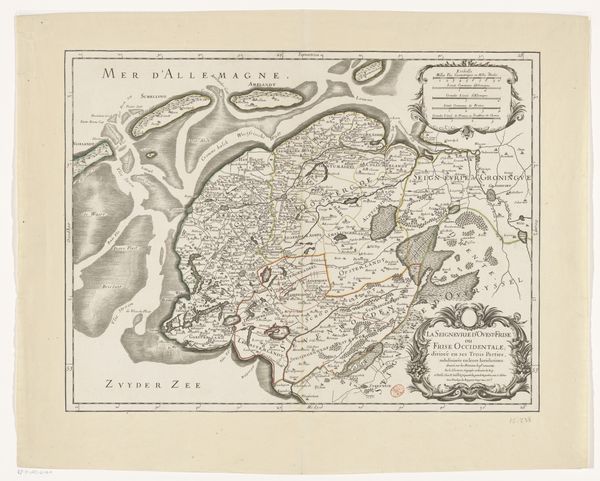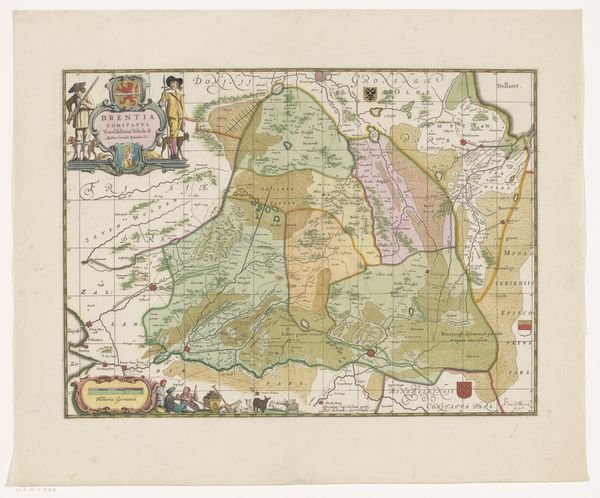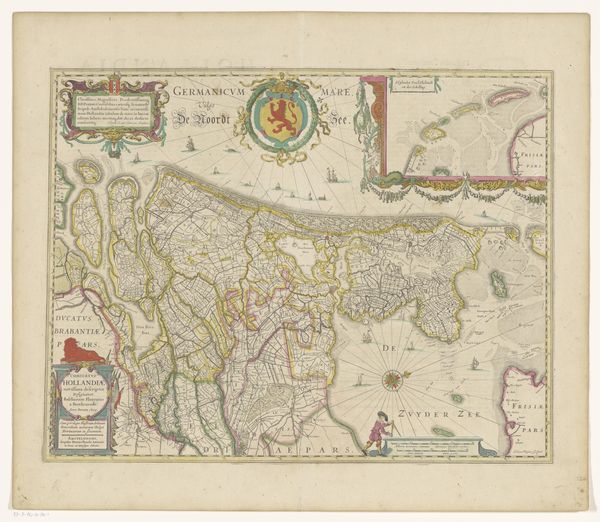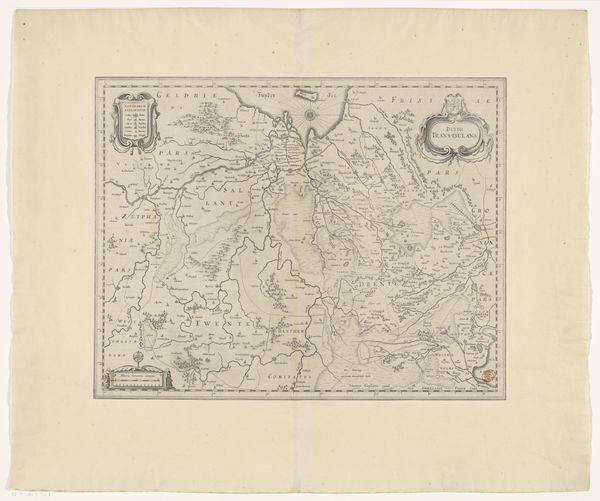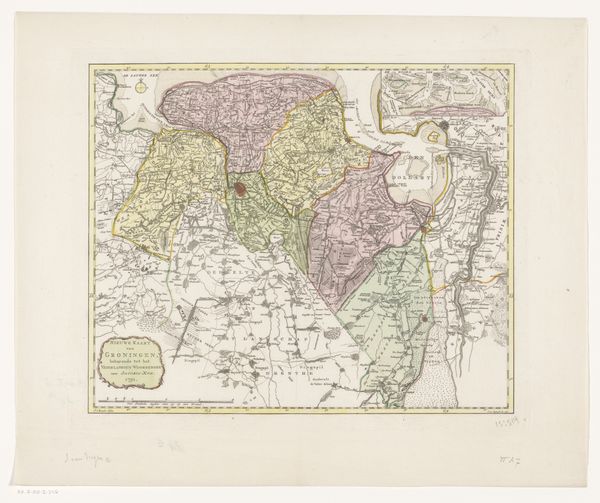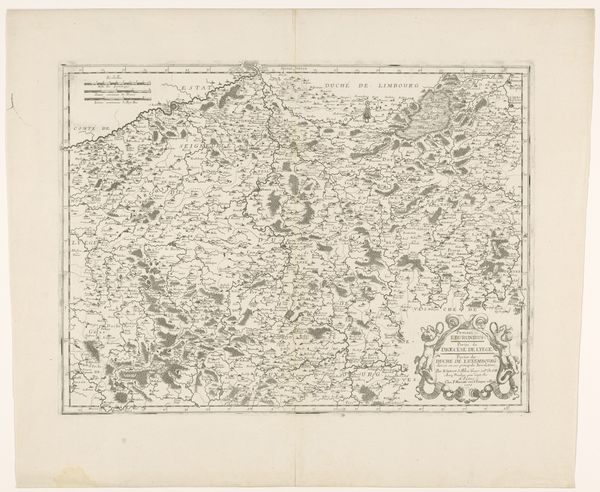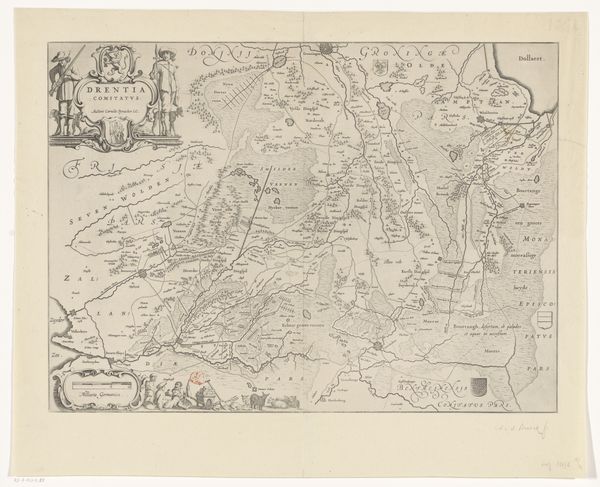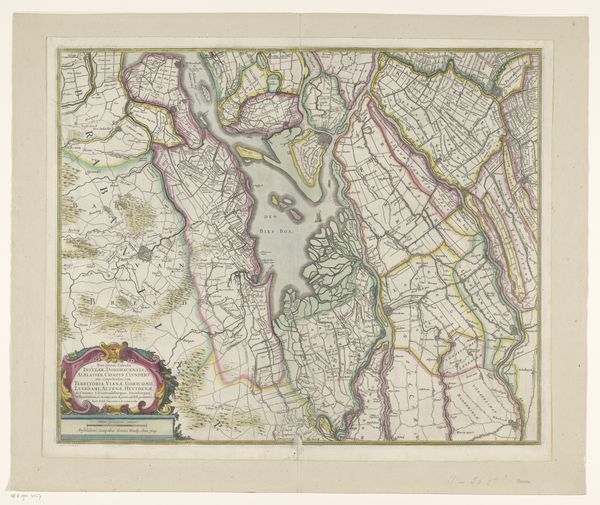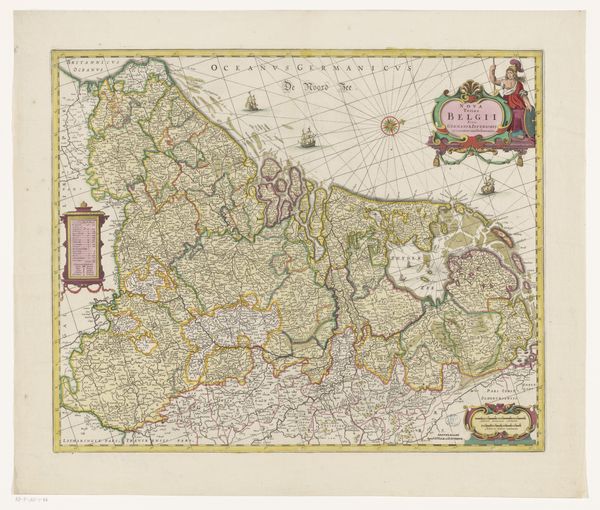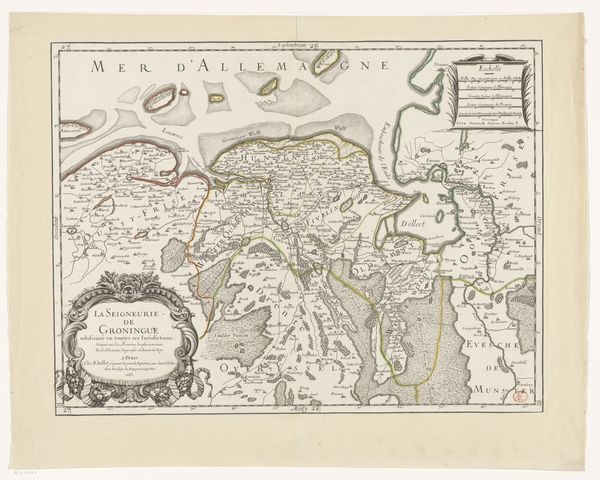
graphic-art, print, etching, engraving
#
graphic-art
# print
#
etching
#
asian-art
#
landscape
#
etching
#
engraving
Dimensions: height 275 mm, width 316 mm
Copyright: Rijks Museum: Open Domain
Curator: At first glance, this "Kaart van Japan," dating from 1744, gives me a strong sense of calculated ambition—the detail is stunning for the period. Editor: Well, from a material perspective, I'm interested in the production process. It's an etching and engraving by Isaak Tirion, a process involving careful application of acid, laborious cutting of metal...consider the workshop and skill necessary to disseminate this image! Curator: Absolutely, the act of disseminating is vital. The Rijksmuseum houses this piece, so let’s contextualize its historical position. It comes from a period when European powers were actively mapping the world, defining territories, impacting global trade... Editor: I agree. Tirion's choice of etching allows for detailed, reproducible images, facilitating the spread of geographic information—but also reinforcing the power of those controlling the image’s manufacture. Who consumes it and to what purpose? That context shifts its significance, in my opinion. Curator: True. Note also the labels in Dutch—consider the intended audience in the Netherlands. They are likely merchants and officials seeking an understanding of the geography to support their East India trading operations, influencing policy decisions and resource management. Editor: It also underscores a subtle blurring of art and craft. The information presented has economic significance, therefore destabilizing high art presumptions through labor-intensive technical processes of dissemination. Curator: That's a good point. Maps possess inherent subjectivity; they reflect the cartographer’s biases and agendas of the society backing the art’s production, so let's consider its limitations as pure geographical fact. Editor: Precisely, questioning what's omitted as well is important in evaluating how materiality intersects social intent. The etching plates used in making such works are valuable materials that directly implicate how accessible that medium and subsequently the maps, were to ordinary people, let alone various international and local cultures. Curator: I find it fascinating to trace this artwork through time and note its institutional journey, seeing it transform from tool of global power play to a valued historical artifact available for all to contemplate within the museum walls. Editor: Exactly, how labor and access dictate consumption provides insight not only on the piece’s aesthetic value but its lasting place within the broader framework of cultural objects and economic activity.
Comments
No comments
Be the first to comment and join the conversation on the ultimate creative platform.
